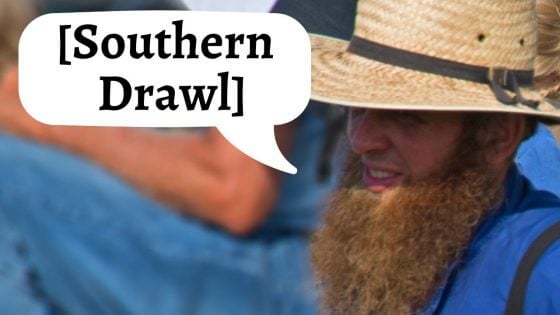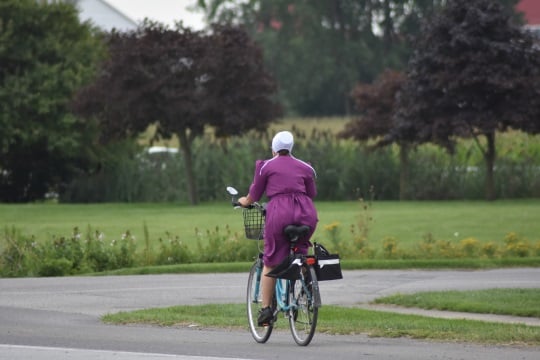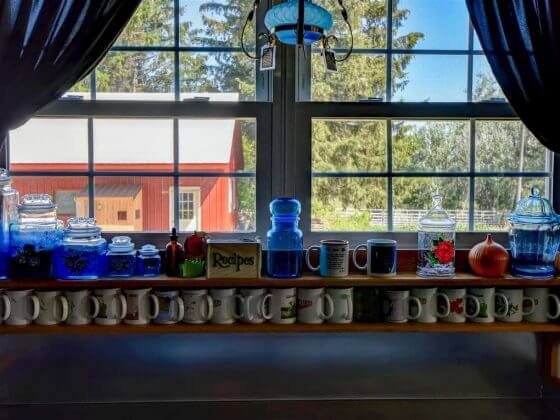Are The Amish German? (Or Dutch?)
You may have heard the Amish described as “German”. And confusingly – you may have also heard them called “Dutch”. So – which is it? Or are they just “Americans”?
The Old Order Amish (aka horse-and-buggy Amish) are just one of many flavors in the American Melting Pot. They’re a people with roots in other places – in this case Old World Europe.
So let’s look at a somewhat confusing question and explain whether the Amish are German, Dutch – or something else entirely.
Jump to:
Are the Amish Dutch?
Amish Roots in Europe
Why are they called “Pennsylvania Dutch”?
Do Amish speak German?
Do Amish speak Dutch?
Do Amish consider themselves German or American?
Do Amish visit Germany?
Are the Amish Dutch?
You may have heard the Amish referred to as the “Dutch”. You might have heard it said they “speak Dutch”. This type of description is presented by the large tourist industry promoting the Amish – or even by the Amish themselves. So does this mean they come from the Netherlands? Or are they just trying to confuse us?

The Amish are not a Dutch people. Though in Anabaptist history there have been some related groups which lived in the area of present-day Netherlands, the Amish themselves are not Dutch-speaking. So where exactly do they come from? And if they’re not from the Netherlands, why are they referred to as “PA Dutch”?
Amish European Roots
Where do the Amish originate from? The Amish are an offshoot of the wider Anabaptist movement, which originated in Zurich, Switzerland in 1525. The early Anabaptists (which means “rebaptizers”) rejected infant baptism, choosing to be baptized a second time as a free-will choice as adults. This and their stance of nonresistance pitted them against the state-sanctioned Catholic church Amish.
The Anabaptist movement spread in the face of state persecution. The ideas of Anabaptism spread even as adherents were hunted by authorities. As a result, Anabaptist people found themselves in parts of Germany, France, Switzerland, as well as Holland. So there were in fact some Dutch Anabaptists in the earlier days of the Anabaptist movement (for instance, Menno Simons, from whom the Mennonites get their name, was a Dutch priest).
Eventually, the Amish branch of the movement emerged in 1693, when a leader named Jakob Ammann (who lived in a German-speaking region of modern-day France known as Alsace) rejected the more liberal approach of other Anabaptist churches. His followers became known as “Amish”.
The Amish began moving to what is modern-day America in the early-to-mid-18th century, settling first in parts of Pennsylvania. They did so in order to escape religious persecution, but also for economic opportunity, as owning land was made difficult for them in Europe.
They were part of a larger migration of Germanic peoples who became known as Pennsylvania Germans or Pennsylvania Dutch. Amish later emigrated and spread to regions of North America, including states like Ohio, Indiana, Iowa, and Illinois, as well as Canada (Ontario). Today the over 600 Amish communities in North America have a total population greater than 370,000 people.
Why “PA Dutch”?
So if they’re a Germanic people, why are Amish called “Dutch” or “Pennsylvania Dutch”? If you ask a tour guide in a place like Lancaster County, you’ll probably be told that “Dutch” is actually a mistranslation or corruption of the word Deitsch, meaning “German”.
However, that’s not quite right. University of Wisconsin professor Mark Louden explains that although Dutch and Deitsch have a common etymology, there is more to it. He notes that in earlier American English, both words – “Dutch” and “German” – were used to mean “German”. So what was the difference?

The two words differed in terms of formality. When an early American used the term “German”, it had a neutral, or more formal connotation. “Dutch” on the other hand, was used to refer to Germanic peoples in more familiar, or “folksier” circumstances.
So here you have two different words meaning “German”, one of which, confusingly, also refers to the peoples of a neighboring, but different present-day nation (the Netherlands). Still with us? So now let’s take a look at what language the Amish speak.
Do Amish speak German?
Yes, the Amish speak a form of German which is called both Pennsylvania Dutch, or Pennsylvania German. These two terms refer to the same language. But again, the usage is different. You tend to see scholars use the term “Pennsylvania German” while, like in the old times, “Pennsylvania Dutch” retains a folksier, more informal context.
Some consider what the Amish speak to be a dialect of German. Others, such as University of Wisconsin professor Mark Louden, see it as its own language.
Louden explains that the Pennsylvania German language which the Amish speak is most closely related to German dialects spoken today in regions of southwestern Germany, an area known as the Palatinate (Pfalz). Louden goes into much greater detail on the language and its history in his book Pennsylvania Dutch: The Story of an American Language.

Additionally, a small minority of Amish known as the Swiss Amish speak different forms of German, which are more alike to modern Swiss German dialects. This is less than 10% of the total Amish population, however.
Can Amish people speak German with German people?
In some cases, the German spoken by the German native may be mutually understandable, more or less, with the Pennsylvania German language spoken by the Amish person. This is especially true if that person speaks Palatine German. It’s not uncommon to hear stories from Amish of how they were able to converse with a tourist from Germany.
It won’t be a 100% match, especially with the influence that English has had upon PA Dutch, including the adoption of some words into the language. But it may be close enough that they can relatively easily understand one another.
Do Amish speak Dutch?
No, as mentioned above the Amish are primarily not a Dutch-rooted people. Thus the Amish do not speak the Dutch language spoken in the Netherlands today, or any other form of Dutch. This is the case despite their language being popularly called “Pennsylvania Dutch” or sometimes “Dutch” for short. The Amish language is a form of German. Here is a further video explanation of where the term “Pennsylvania Dutch” comes from.
Do Amish consider themselves German?
What about Amish identity? Do they see themselves as “German”? No, Amish do not really consider themselves “German”. Now they may identify as having German heritage. With German language as their mother tongue, and High German Bibles used for church and religious settings, there is definitely a heavy vein of Germanic culture within the Amish.
But it’s rather more accurate to say they see themselves as both Amish – and Americans. They can also be called, for the most part, Pennsylvania Germans or Pennsylvania Dutch. They find themselves within a larger Pennsylvania German culture and heritage. This heritage includes not only the Amish, but many other immigrants who emigrated from Europe and established communities in the region of southeastern Pennsylvania and beyond.
This would mean both other Anabaptists like Mennonites (of whom the plainer groups, the Old Order Mennonites, also speak PA Dutch), but also non-Anabaptist, more modern or progressive groups. Known as the “Fancy Dutch”, these immigrants of mostly Lutheran or Reformed background more readily assimilated over time with American society. The descendants of these Pennsylvania Germans in many cases no longer speak the language today, and may have lost most if not all cultural connections to their ancestors’ PA German culture.
The Amish do identify with many American traditions and cultural markers, however. Amish children learn about the Presidents and US history in their one-room schoolhouses. Amish youth and some adults play North American games like baseball, basketball, and hockey. However, Amish don’t fly the US flag, or display other outward signs of patriotism (reflecting their Two Kingdoms theology). This along with their Germanic background has historically caused some Americans to view them with suspicion, especially in times of national strife like during the World Wars. However, they are firmly ensconced in the American fabric, as one of many peoples with ethnic ties to central Europe.
Do Amish ever visit Germany?
While the Amish (for the most part) do not fly, that doesn’t mean they’re not able to visit Europe. Some Amish do take trips by ship to visit Europe, often to visit places important to their history in present-day countries like Germany and Switzerland.
Amish do have an interest in their roots in Germany and other parts of Europe. Meeting a person from Germany can be an especially interesting experience – both for the Amish person and the German visitor.






Low/High Dutch
Erik, I don’t recall the source, but I have been told or have read that the PA Dutch were first called Dutch by their British-descended neighbors in colonial times. Apparently, the British referred to everyone from the Rhine river valley as Dutch, with the residents of the Low Countries called the Low Dutch and the residents of the upper Rhine (FR, DE and CH) called the High Dutch. This practice may have been inherited by the British from Roman times, when these areas were Roman provinces called Germania Inferior and Germania Superior, respectively.
Thanks for your blog. I have learned a lot from it.